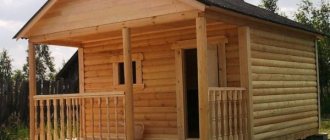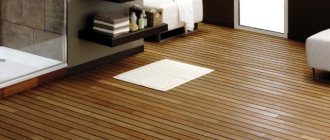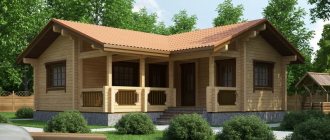A convector is considered the safest heater, an ideal device for an apartment that smoothly gains temperature and confidently maintains it.
Benefits of use:
- Good workmanship (uniform painting, special painting methods, corrosion-resistant steel, etc.).
- Reliable fastening. Fastening is carried out using standard brackets. You can also use feet, which can be purchased separately.
- Air distribution. The air distribution is made so that air from the room enters the lower part of the device. It then passes through the inside, is heated and exits through the slots in the front of the panel. Moreover, the slots have guides at 45 degrees. The exhaust air is directed first downwards and only then upwards. Thus, a more uniform temperature distribution throughout the height of the room is achieved.
- Fast heating. Full heating inside TENA occurs in less than 2 minutes.
- Electronic thermostat. The thermostat is located at the top of the device.
- Temperature sensor. There is a temperature sensor on the side of the device that measures the temperature of the incoming air.
- Overheat protection sensor. There is an overheat protection sensor inside the case.
- Temperature from 0 to 30 degrees. The device allows you to maintain the room temperature from 0 to +30 degrees.
- Doesn't burn oxygen. Since the incandescent coil is hidden inside the TENA and is reliably sealed at both ends.
- Protection class.
The convector must not be hot. Its body heats up to a maximum of 60 degrees. Therefore, it is absolutely safe for people. Also, this temperature does not dry out the air.
Modern models are light and compact. Each of them has a device for mounting on the wall. Almost every device has wheels for moving around the apartment.
User reviews
Nikolay, Moscow
Hello. I recently purchased an Electrolux ECH/AG-2000. As it turns out, this is a real Mercedes among household heaters. Reliable, fast, stylish, and what wheels. It gave me real pleasure to use. The advantage of this model is that air circulation occurs naturally. Cold air flows down, heats up inside, rises up and exits warm outside through the grille. In my case, the heating area is 20 square meters. meters. It is very comfortable to be in the room. The elementary controls are also pleasing. Power adjustment is provided here.
Svetlana, Belgorod
I have long dreamed of a modern heater. In a specialized store I was advised to purchase Ballu BEP/E-1500 Plaza. Despite the name, he is completely different from the Ballu bear from the cartoon about Mowgli. It's a completely different beast. The refined, minimalist design hides the latest advances in electric heating. There's even a display here. It is very convenient to use the remote control. It is equipped with a precise thermostat. My husband installed it in the living room (area 25 square meters). The room heats up very quickly. I really like this device.
Igor, St. Petersburg
I have been using Timberk Laplandia TEC.E2 M 1500 for over a year now. This is an excellent solution for harsh winters. When purchasing, I noticed the exclusive design. The one-piece body looks like an iceberg. I installed it on the floor. For this I used special legs that are included in the kit. I would also like to note the very simple controls. As it turns out, this model supports three power modes.
Larisa, Sochi
Our old heater that was installed in the living room broke down. Without thinking twice, we purchased a modern Ballu Camino BEC/E-2000. This model is the most powerful in the Camino line. Therefore, it easily heats a large room. Despite this power, the device is very compact. This model fits perfectly into the interior of the room. Ballu Camino BEC/E-2000 maintains the set temperature well.
Gennady, Ivanovo
Last week my wife and I purchased a modern heater NeoClima Comforte L2.0. We chose a budget model. Because the budget was limited. This is a high-quality model that perfectly heats a small room.
The best with natural convection
Comparison table (Natural convection)
| Manufacturer | Model | Width | Depth | Length | Heat dissipation (70C) | Price | Price per 1 W |
| TOP 1 Itermic | Itermic ITT 250.90.2000 | 250 | 90 | 2000 | 880 W | 22 431 | 25.40 |
| TOP 2 Gekon | Gekon Eco 230.80.2000 | 230 | 80 | 2000 | 750 W | 27 009 | 36.01 |
| TOP 3 Heatmann | Heatmann LINE 250.90.2000 | 250 | 90 | 2000 | 741 W | 44 901 | 60.59 |
| TOP 4 Kermi | Kermi KVN 230.80.2000 | 230 | 80 | 2000 | 722 W | 26 490 | 36.68 |
| TOP 5 Varmann | Varmann Ntherm 230.90.2000 | 230 | 90 | 2000 | 718 W | 36 553 | 50.90 |
Principle of operation
The convector does not need a powerful heater. It's empty in the middle. There are 2 large plates here. The heater is located between them. It slowly heats the plates, which in turn heat the air.
Cold air is drawn in from below, expands and is thrown into the room with increasing force. In addition, each plate heats on its sides. This operating mechanism makes convectors more economical compared to other heaters.
The principle of calculating power is as follows: for every 100 watts of power – 1 square meter of area.
Instead of an epilogue
The process of purchasing an in-floor convector is quite complicated, because many nuances must be taken into account. The main mistake of the buyer may be his pursuit of cheapness. In budget samples, material is often used extremely sparingly. For example, for water heaters the thickness of the walls of the conductive pipe is specially reduced and a relatively small number of fins are installed. All this will affect the quality of heat transfer, since fins installed with a large pitch will release air into the room a few tenths of a degree cooler. The same will apply to the strength of the case itself - the thinner it is, the less the entire system as a whole works. Cheap models are also famous for their extremely noisy fans, which sometimes even the highest quality rubber plugs are unable to silence.
To summarize, we can conclude that when choosing a floor convector, you should not choose a cheap price at the expense of quality. At the same time, it should be noted that if you order a convector on an online platform directly from the manufacturer, you can significantly save on retail overpayments. As an analysis of foreign websites of manufacturers of these devices shows, the cost of delivery is usually already included in the total price, and the delivery destination can be almost anywhere in the world.
Types of convectors
Today there are a large number of different models available in stores. A convector, like any other heater, is classified taking into account its parameters and characteristics.
List of classifications:
- The so-called sunrise circulation principle.
- Heating principle.
- Type of instalation.
The sunrise circulation can be:
Installation types:
- Built-in models.
- Wall-mounted , installed using special fastenings.
- Floor-mounted , mounted with wheels.
Heating principle:
- electric heating;
- water heating;
- gas heating;
Tip-over indicator
It is important to note that when buying a wall-mounted convector, you should take into account that such models do not have tip-over indicators, which specifically turns off the power supply in this case. So it is better, if you are going to use a floor-standing model, to purchase convectors specially designed for this.
Features of choice
When choosing a convector, you need to consider where and under what conditions the device will operate. For additional or temporary heating in the apartment. Almost any convective heater with a power of 1-2 kW will do.
But there are also special cases. For example, if you plan to use electric convectors as the main source of heat, then the ideal option would be devices that can be combined into a single network with a common control panel.
For the bedroom, it is better to choose a convector with an electronic thermostat, since mechanical ones make quiet clicks when operating.
If the product is installed in a children's room, then you need to pay attention to:
- Case surface temperature.
- No sharp corners.
- Possibility of control blocking.
Also, when choosing a convector it is worth considering:
Power and service area
Heating power is the main technical characteristic of any heating device, which is usually about 100 watts per square meter. meter. For example, for a room of 10 square meters. meters with ceilings 2.5-3 meters high will require a 1 kW convector.
If the convector will be used only for additional heating, then you can safely take a device with a lower capacity. Almost all modern models have several heating stages. Therefore, if in doubt, you can take a more powerful device with a small adjustment step, which is suitable for all occasions.
Design and dimensions
Each series of convectors includes models of different power, which, as a rule, have the same height and thickness, but differ in width. The greater the power, the wider the device.
For example, in one line the 750 W model is only 34 centimeters wide. While the 2 kW model is almost twice as wide. Standard housing types are the most popular.
However, manufacturers also produce models for special occasions. For example, low and very wide baseboard convectors. For installation under large windows and stained glass or, conversely, tall and narrow appliances.
Connoisseurs of aesthetics and exclusive interior solutions will like thin glass convectors with conductive gel inside the body. Such heaters can look like a mirror or glass panel with a designer pattern or any application at the request of the client. Everything is limited only by imagination.
Inspection before purchase
- It is imperative to inspect the device before purchasing. Damage to the heater cover is unacceptable, and the corners and seams must be smooth and neat.
- Low-quality convectors almost always have flaws in their appearance.
- The higher the convector, the faster it will heat the surrounding air, this should be taken into account.
- Convectors with a body length of 40 cm and above are considered tall.
- Convectors up to 20 cm high, which are usually placed on baseboards, have a low flow rate, so they are produced up to two and a half meters long.
- If you are going to install the convector in a damp room, then you must choose a model with splash protection.
Installation Rules
Convectors can be installed in 2 ways:
- Using the legs that are included in the kit.
- On the wall using a special mount.
Installation using feet:
- Preparing the legs. We fasten the wheels.
- Installation of legs. Now you need to attach the finished legs to the heater. The legs are attached at the bottom of the device.
Wall installation:
- Let's start by choosing the optimal location. The device must be placed away from flammable objects and household appliances.
- additional equipment .
- Next you need to measure the distance between the device mounts. The distance between the heater and the floor should be 15-20 centimeters.
- After this, we install a special mount using the screws that are included in the kit.
- We hang the device. To do this, we put the lower part on the mount first, and then the upper one.
How to choose?
- The main parameters that you will need to follow when buying a convector are the following.
- Convenience and safety of use, efficiency, long-term operation, useful additional functions, and, of course, price. All of them will be determined by the design of the heating device.
- First you need to decide which convector you will need. They are usually placed on walls or under windows.
- If you want the convector to be mobile, then you will need to purchase a special floor-standing model with special legs.
Blitz tips
What buttons are there on the electronic thermostat:
- Indicator of inclusion in the electrical circuit.
- power button .
- Indicator for turning on heating of the heater.
- control buttons .
- Programming button.
- Large electronic display , which displays the current air temperature in the room, and all the settings that you make during the programming process.
Convector operating procedure:
- To set the air temperature value that should be maintained in the room, you need the Set programming button. The numbers on the display will start blinking. Using the “up” and “down” buttons you need to set the desired temperature value. There is no need to confirm the set temperature value. After 4-5 seconds the blinking stops and the settings are saved.
- Next , on the thermostat itself, you need to press the power button and the display will show the current value of the air temperature in the room. If the room temperature is lower than the set value on the thermostat, the green indicator will light up on the display and the heating will turn on. If the room temperature is higher than the set value, then heating does not occur and, accordingly, the indicator will not light up.
- First , you need to insert the electrical plug of the device into an outlet.
The convector allows you to display the temperature not only in Celsius, but also in Fahrenheit. To convert the temperature reading from Celsius to Fahrenheit, you need to press the “Set” button on the operating device and, while holding it, press the “Down” button. To return to Celsius, press the “Set” and “Up” buttons.
Private houses, cottages, and guest houses may not always be in use during the heating season. What to do with their heating during periods of absence of residents.
If a conventional water heating system is installed in such a house, then for the period when the house is not in use, you can use the “anti-freeze mode” function . This function is available in any modern gas or electric boiler. Its essence comes down to ensuring that the air temperature in the rooms is maintained at approximately +7 degrees C, and the coolant temperature, for example, is not lower than +15..+30 degrees. Under such conditions, the water in the pipes will not freeze and pipes or fittings will not burst.
This method has two main disadvantages:
- Maintaining a positive temperature in the house during frost will require a certain amount of energy . Accordingly, money will “flow out”.
- In real conditions in populated areas of the CIS, energy supply is not something absolutely reliable. Power outages will lead to shutdown of boiler equipment. Most boilers will require a manual start after a long shutdown. That is, if there is no person, the system will remain inoperative. As a way out, many resort to the help of neighbors to “look after” the house.
These shortcomings lead to the fact that using the “maintain positive temperature” function is advisable only for short periods. For example, for a week or two spent on vacation.
Note. For a period of 2-3 days, the temperature in the house drops to 7 degrees. not economically feasible, because upon return, you will have to “powerfully” heat it, which will consume a large amount of energy.
The figure shows the cost-effectiveness of using the frost protection function depending on the time of use. It is quite obvious that it is not advisable to use it for a couple of days. Nevertheless, the specific timing and energy savings directly depend on many factors, the most important of which are the air temperature outside and the insulation of the house. Thus, the graph cannot be used for any exact calculations, but only reflects the very principle of applying “freeze protection”
Discuss this article, leave a review on Google+ | VKontakte | Facebook
If you dream of a safe heating device, lighter and more compact than an oil heater, and quieter than a fan heater, a convector for heating a room will be a good option for you.
Dependence of price on heater characteristics
The cost of the convector will consist of its following characteristics:
- The pressure used and the heating temperature given;
- Total thermal power;
- Fan noise;
- Their number in the design;
- Average energy consumption;
- Availability of size chart;
- Features of decoration.
Selecting a heater with specific characteristics and so that they correspond to price/quality indicators is not so difficult today - fortunately, most convector models are sold according to the so-called “designer” scheme (the entire device is equipped with the corresponding elements separately).
Regarding prices, we can talk about the rather high cost of the equipment in question in general. For example, even for a brand released in the vast countries of the former USSR, you will have to pay about 16,000 rubles for a sample with a power of 1000 W. In the former republics, production is mainly focused on models for heating a total area of up to 25 meters with a total price of 50,000 rubles.
Pros and cons of equipment
Heating convectors have many advantages that speak in favor of this type of heating:
- Simple installation and simple work. They purchase the device, install it on legs, or hang it on the wall, connect it to the electrical network, and everything is ready to go. You just have to wait a bit until the air warms up.
- Long service life, designed for 15 years or more. No special maintenance is required. You just need to wipe off the dust in time so that it does not get caught in the upward air flow.
- The undoubted advantage is the relatively low price.
- No intervention is required to maintain the temperature; it is set once, when turned on, and changes at will.
- Quiet operation. Mechanical models make a characteristic clicking sound when the thermostat is activated, but electronic models operate completely silent.
- A simple principle of operation, with efficiency reaching up to 95 percent.
The devices also have disadvantages that need to be taken into account:
- Noticeable energy consumption;
- It is not advisable to heat large areas; in this case, the operating principle of an electric heating convector can be used as an additional source of heat.
- If the dust is not wiped off in time, the needle heaters will burn it, releasing a characteristic unpleasant odor.











